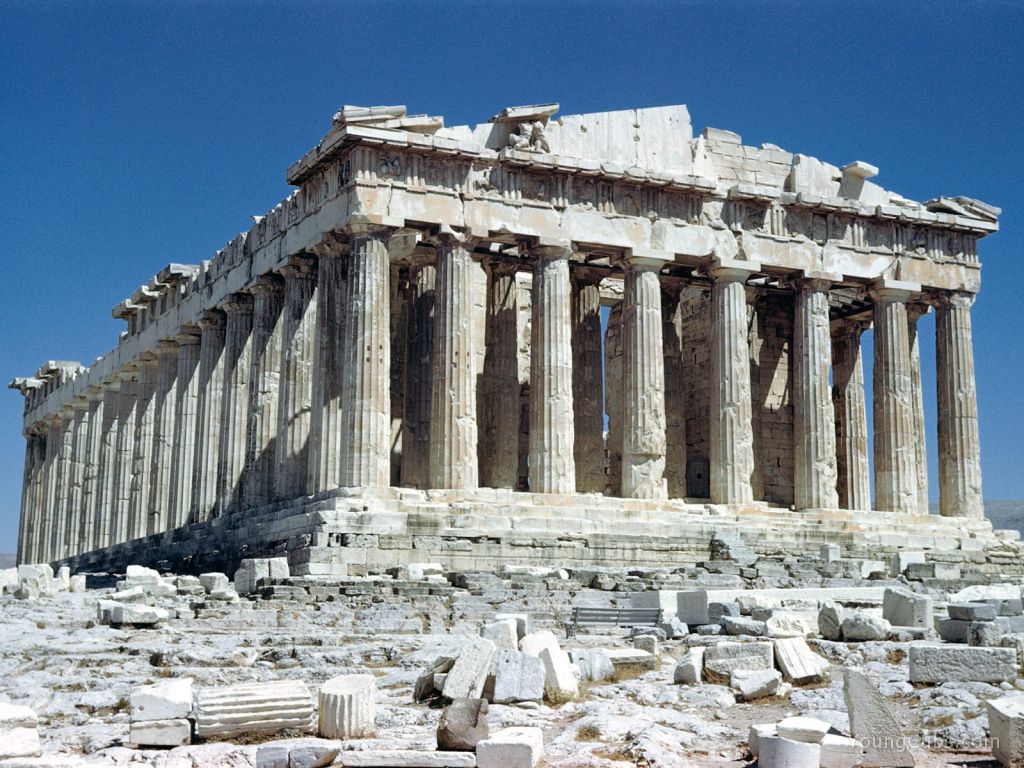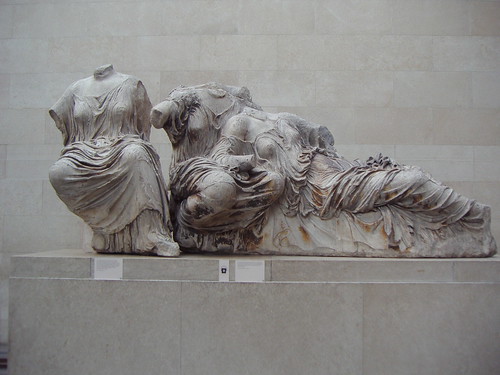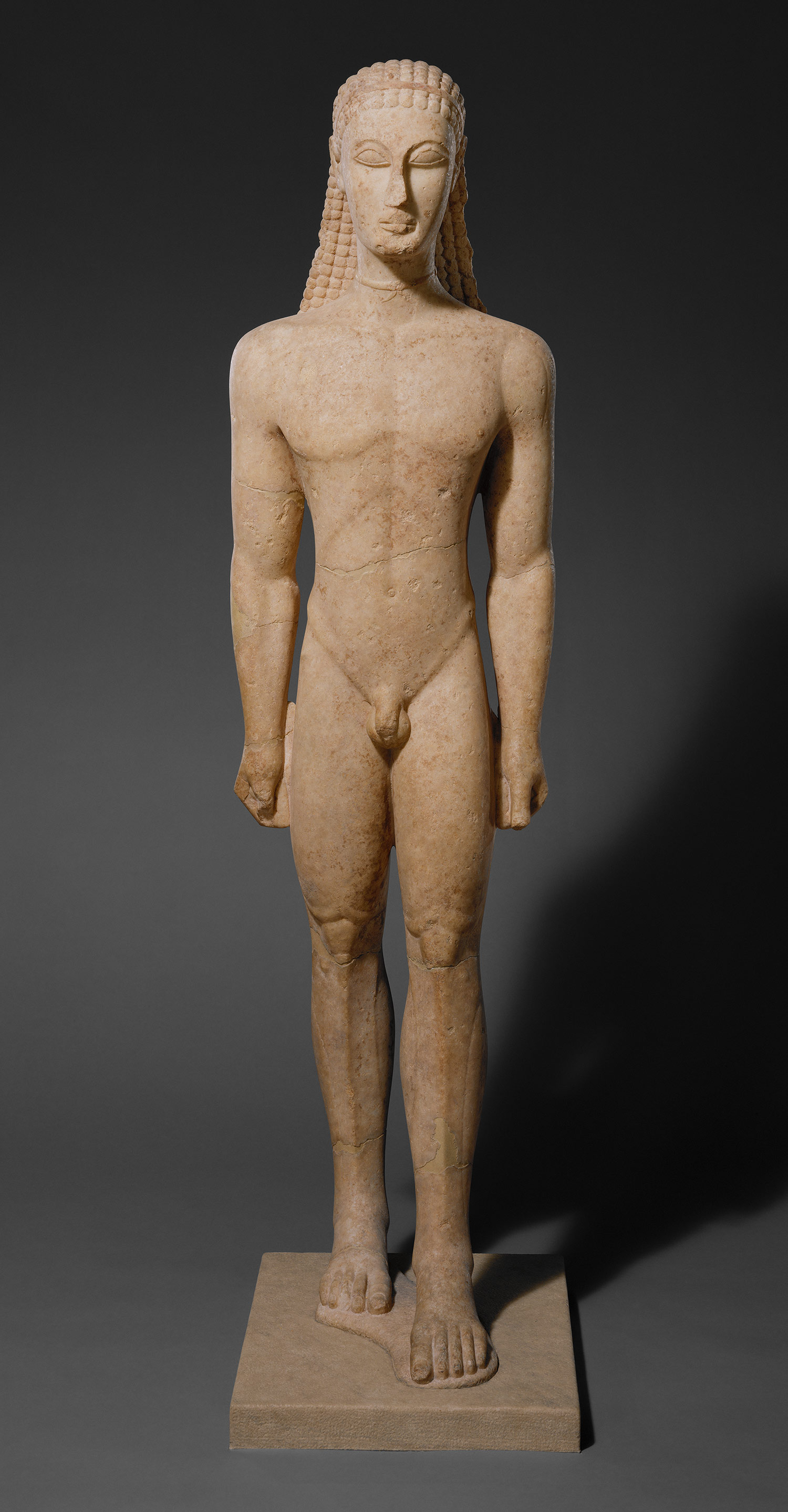 discovered in 1820, this was believed to depict aphrodite, the greek goddess of love and beauty. made of marble and slightly larger than life at 203 cm 6ft 8 in high. Arms lost like many greek sculptures.
discovered in 1820, this was believed to depict aphrodite, the greek goddess of love and beauty. made of marble and slightly larger than life at 203 cm 6ft 8 in high. Arms lost like many greek sculptures.
Sunday, November 4, 2012
venus de milo
Also called amphrodite de milo, this sculpture was made around 130- 100 BC.
 discovered in 1820, this was believed to depict aphrodite, the greek goddess of love and beauty. made of marble and slightly larger than life at 203 cm 6ft 8 in high. Arms lost like many greek sculptures.
discovered in 1820, this was believed to depict aphrodite, the greek goddess of love and beauty. made of marble and slightly larger than life at 203 cm 6ft 8 in high. Arms lost like many greek sculptures.
 discovered in 1820, this was believed to depict aphrodite, the greek goddess of love and beauty. made of marble and slightly larger than life at 203 cm 6ft 8 in high. Arms lost like many greek sculptures.
discovered in 1820, this was believed to depict aphrodite, the greek goddess of love and beauty. made of marble and slightly larger than life at 203 cm 6ft 8 in high. Arms lost like many greek sculptures.
Amphora Exekias
an amphora is a jar with 2 handles that has pictures on it, This particular one was made by Exekias in about 530 BC.
 This depicts an image of Achilles and Ajax playing a game of morra. amphoras were black and then painted gold, later they were changed to be gold and painted with black paint.
This depicts an image of Achilles and Ajax playing a game of morra. amphoras were black and then painted gold, later they were changed to be gold and painted with black paint.
 This depicts an image of Achilles and Ajax playing a game of morra. amphoras were black and then painted gold, later they were changed to be gold and painted with black paint.
This depicts an image of Achilles and Ajax playing a game of morra. amphoras were black and then painted gold, later they were changed to be gold and painted with black paint.
parthenon
Another exelent example of greek architechture is the Parthenon, created about 448- 432 BC.

this is one of the best known buildings of the classical period. Located atop the acropolis in athens, this doric style temple was built and dedicated to the athinians patron goddess, Athena Parthanos. All in all there are 70 thousand pieces, and even though it might seem to be perfectly straight, there are actually no straight lines. The stylabite is bowed and columns are wider near the bottom. each column is 33 ft tall and the main structure is 101 ft wide and 228 ft long. This is an extreemly advanced version of a post and lintel construction. there was once a 40 ft statue of athena covered in gold inside. there is a recreation of the parthenon in nashville, TN. This detailed all greek ideals. During the peloponnesian war, where the greeks fought against sparta , the statue of athena had to be stripped of its gold to fund all the costs of the greek army.

this is one of the best known buildings of the classical period. Located atop the acropolis in athens, this doric style temple was built and dedicated to the athinians patron goddess, Athena Parthanos. All in all there are 70 thousand pieces, and even though it might seem to be perfectly straight, there are actually no straight lines. The stylabite is bowed and columns are wider near the bottom. each column is 33 ft tall and the main structure is 101 ft wide and 228 ft long. This is an extreemly advanced version of a post and lintel construction. there was once a 40 ft statue of athena covered in gold inside. there is a recreation of the parthenon in nashville, TN. This detailed all greek ideals. During the peloponnesian war, where the greeks fought against sparta , the statue of athena had to be stripped of its gold to fund all the costs of the greek army.
The porch of the maidens
making the transition from sculptures to architechture, this is a great work of architecture called "the Porch of the Maidens". from around 421- 405 BC.

located on the erecthium, these large lady columns, called caryatids, are right beside the parthenon on the acropolis.

located on the erecthium, these large lady columns, called caryatids, are right beside the parthenon on the acropolis.
Nike of Camothrace
another piece from the hellenistic period is "nike of Camothrace", made around 200BC.
 Also called Winged Victory, Nike is the greek goddess of victory. in this sculpture she is landing on the bow of a ship, there is a recreation of this outside ceasars palace in las vegas. this piece itself is in the Louvre museum.
Also called Winged Victory, Nike is the greek goddess of victory. in this sculpture she is landing on the bow of a ship, there is a recreation of this outside ceasars palace in las vegas. this piece itself is in the Louvre museum.
 Also called Winged Victory, Nike is the greek goddess of victory. in this sculpture she is landing on the bow of a ship, there is a recreation of this outside ceasars palace in las vegas. this piece itself is in the Louvre museum.
Also called Winged Victory, Nike is the greek goddess of victory. in this sculpture she is landing on the bow of a ship, there is a recreation of this outside ceasars palace in las vegas. this piece itself is in the Louvre museum.
the dying gaul
Entering the Hellenistic period of sculptures, we have a sculpture known as "The Dying Gaul", made around 230-220 BC.

A Gaul is an old term for a Celtic warrior, these celtic warriors fought naked to show how ripped and strong they were, they also believed that all they needed to win was what nature gave them. This isnt the actual greek sculpture, its a Roman copy of a Greek bronze. The romans were pros at copying things exactly and extreemly precisely.
A Gaul is an old term for a Celtic warrior, these celtic warriors fought naked to show how ripped and strong they were, they also believed that all they needed to win was what nature gave them. This isnt the actual greek sculpture, its a Roman copy of a Greek bronze. The romans were pros at copying things exactly and extreemly precisely.
3 Goddesses
From the classical period comes a work of art known as "3 Goddesses", created about 435 BC.

These were once located on the east pediment, or triangular area at the top of the face of a classical building, of the Parthenon.They were a part of the frieze, which was all the sculptures on the pediment. They are a little bit larger than life, and to make this the models wpre wet clothes that hugged the body so that the sculpture could see everything better and show more detail. These goddesses are supposed to be commemorating the birth of Athena.

These were once located on the east pediment, or triangular area at the top of the face of a classical building, of the Parthenon.They were a part of the frieze, which was all the sculptures on the pediment. They are a little bit larger than life, and to make this the models wpre wet clothes that hugged the body so that the sculpture could see everything better and show more detail. These goddesses are supposed to be commemorating the birth of Athena.
Kritos Boy
Another sculpture from the archaic period is a piece called "kritos boy", from around 480 BC.
 He is an example of contapposto, or counterpose. Contapposto is where the weight is shifted, its a more natural look where one knee is bent and one side of the hip is higher that the other.
He is an example of contapposto, or counterpose. Contapposto is where the weight is shifted, its a more natural look where one knee is bent and one side of the hip is higher that the other.
 He is an example of contapposto, or counterpose. Contapposto is where the weight is shifted, its a more natural look where one knee is bent and one side of the hip is higher that the other.
He is an example of contapposto, or counterpose. Contapposto is where the weight is shifted, its a more natural look where one knee is bent and one side of the hip is higher that the other.
greek art history
The greeks are famous for their awesome lookin statues and sculptures, im gonna show you a few of the ones that we still have to this day. Here is one of them called "Statue of a Youth".

He represents apollo or an idolizedd athlete. He is also a sculpture in the round, with an archaic smile. It was sculpted in the archaic period, and it has very heavy egyptian influence, as you can see by the arms at side witth one foot foward. something like this would have been a wealthy person's gravemarker.
Subscribe to:
Posts (Atom)